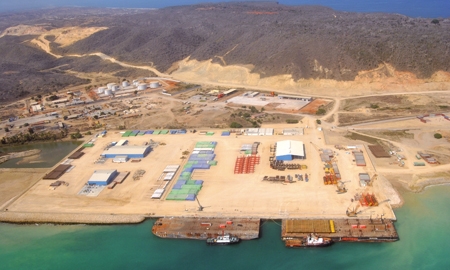Infrastructure development in a country like Angola is of paramount importance. Expansion of telecommunications infrastructure – a direct result of the competition among the country’s telecoms operators for greater market share – is well underway, offering exciting investment opportunities and huge potential for growth. For reconstruction to continue in this post-war era, decent roads, functioning railroads and efficient ports are a must, and the Angolan government is doing everything in its power to bring these up to standard.
“In 2006 we came to the conclusion that it would not be worth expanding the port. Instead, it would be more logical to build a bigger, brand new port.”
Armando Ferramenta, CEO of Porto Amboim |
Ports alone are gateways for up to 90% of imported construction materials, and as a result, the main ports of Luanda, Lobito, Malongo and Namibe are often overcrowded. The government has turned its attention to alternatives, such as
Porto Amboim, the site of a former port that deteriorated to the point of closing in 1997.
Rather than invest in its modernization, the government has opted to start from scratch. “In 2006 we came to the conclusion that it would not be worth expanding the old port. Instead, it would be more logical to build a bigger, brand new port,” explains Armando Ferramenta, CEO of Porto Amboim.
Located midway between Lobito and Luanda, the future port of Amboim would serve Angola’s central region, and rather than compete with the two larger ports, it would complement them and boost overall national development.
In addition to serving as an ideal entry point for goods destined for the central hinterland and coastal areas, Porto Amboim should be an important outlet for exports, as well.
“This is potentially an agriculture area, and therefore our intention is also to promote agriculture for export purposes, with products like bananas, coffee and cotton,” says Ferramenta. “In fact, we’d better prepare our port so the volumes of agriculture production doesn’t catch us unawares.”
Porto Amboim boasts a naturally calm bay and water retention works by Painal (a company that manufactures material for deep water oil exploration) have further slowed the currents. Short-term plans for the port see a wharf with the capacity for two large vessels and one small one simultaneously. The government has already approved the project and funding of $30 million; all that remains is for Porto Amboim’s board of directors to choose from the various construction proposals it has received.

0 COMMENTS